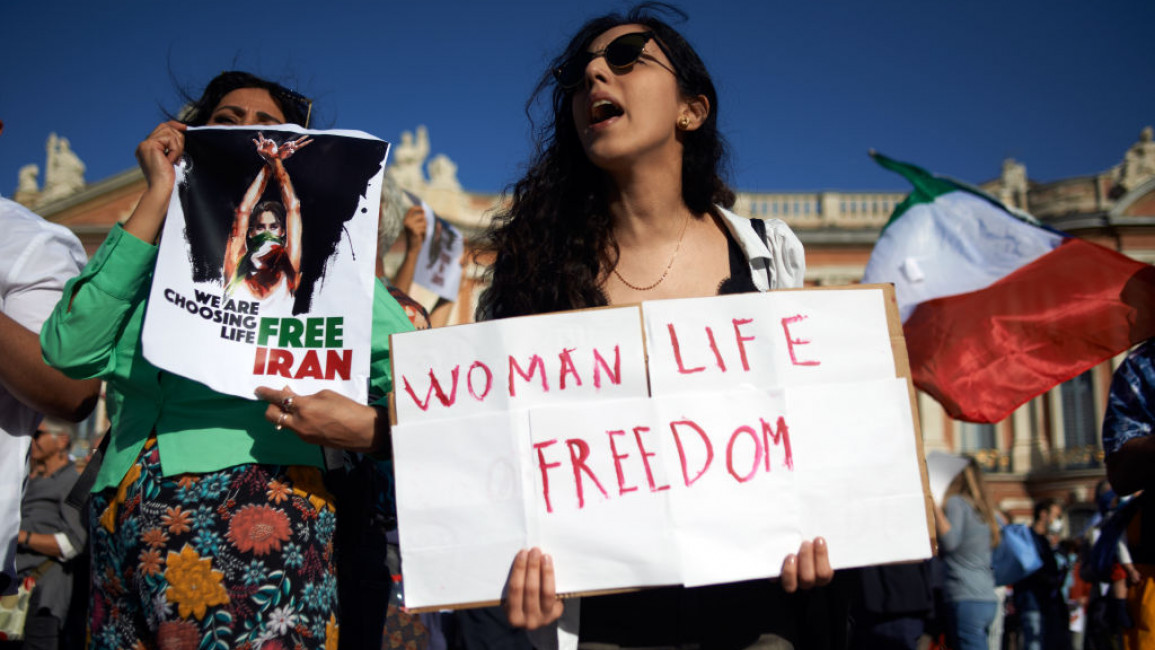
Back to the brink in Iran
In the 43 years since its founding, Iran’s Islamic Republic has overcome numerous internal and foreign policy challenges. But the massive public protests that erupted across the country last month following the death of 22-year-old Mahsa Amini, who died in custody after the morality police arrested her for “improperly” wearing her hijab, pose a major threat to the regime. Iran is in the grip of what may be its most serious crisis.
When the Islamic Revolution toppled the pro-Western monarchy of Mohammad Reza Shah Pahlavi and installed Ayatollah Ruhollah Khomeini as the country’s Supreme Leader, Western observers doubted that a theocratic regime would last long. Some analysts argued that religious fundamentalists could not possibly have the necessary skills or experience to run a sophisticated country like Iran.
''Decades of political oppression, widespread corruption, and economic mismanagement have gradually eroded public confidence in the Islamic Republic. The Covid-19 pandemic and foreign-policy complications – including US-led sanctions and Iran’s involvement in several costly regional conflicts – have left many Iranians so disenchanted with the status quo that a nationwide uprising was only a matter of time.''
But the regime has withstood all of its domestic challenges by combining a combative (jihadi) line with Khomeini’s pragmatic (ijtihadi) approach. Khomeini’s successor, 83-year-old Ayatollah Ali Khamenei, has followed his predecessor in balancing ideological and practical considerations to ensure the regime’s survival.
As Supreme Leader, Khamenei is the embodiment of the “sovereignty of God” – a status that has helped him to prevail over presidents and other elected officials who merely represented the sovereignty of the people. When Khamenei sensed a serious threat to his authority and the state’s instruments of power, especially the Islamic Revolutionary Guard Corps, he consented to internal reform and showed pragmatism in his foreign policy, supporting the 2015 Iran nuclear agreement, for example, as an act of “heroic flexibility.” But, otherwise, he has remained iron-fisted at home and defiant in the face of Western pressure over Iran’s nuclear program and regional influence.
But what Khamenei has failed to understand is that over time there would be a new generation of Iranians who have no memory of the 1979 revolution or allegiance to the Islamic Republic, especially when that regime has not served them well. Despite Iran’s riches – especially its massive reserves of oil and natural gas – about 40% of Iranians live below the poverty line.
Decades of political oppression, widespread corruption, and economic mismanagement have gradually eroded public confidence in the Islamic Republic. The Covid-19 pandemic and foreign-policy complications – including US-led sanctions and Iran’s involvement in several costly regional conflicts – have left many Iranians so disenchanted with the status quo that a nationwide uprising was only a matter of time.
The current protests follow previous waves of popular unrest that the government successfully suppressed, most notably the Green Movement demonstrations that erupted after the disputed presidential election of 2009. The hardliners who created the Islamic system and control it today know that if the regime falls, they will go down with it, so they call in the riot police at the first sign of mobilised opposition.
But the regime may not be able to quell the protests indefinitely. Young Iranians – roughly 65% of the country’s population – are fed up with the regime’s revolutionary rhetoric and theocratic dictates. They want rights, freedoms, transparency, better living conditions, and a government that represents their interests. The ruling clerics and their supporters have monopolised and mismanaged the economy’s commanding heights, leaving most of the population (which has nearly tripled in size since 1979) increasingly frustrated, desperate, fearful, and angry.
To be sure, the chances of overthrowing the Islamic regime appear slim. But Iranians have a history of revolting against authoritarian impositions. After all, the Islamic Revolution that ended the Shah’s rule followed two earlier attempts at pro-democratic reform. One of these attempts ended in the 1953 CIA-orchestrated coup d’état that toppled the elected government of reformist Prime Minister Mohammad Mossadegh and strengthened the monarchical rule of the Shah.
The Islamic Republic’s leaders have frequently cited the 1953 coup, exploiting the “hegemonic interventionism” of the United States to legitimise the regime, consolidate its power, and boost its regional influence. But this formula no longer works on most Iranians, who blame the theocracy, not the Americans, for their grievances.
To stabilise their regime, Khamenei and his supporters must change course and empower reformist factions. A decade ago, Iranian reformers, led by former President Mohammad Khatami, tried to make the Islamic Republic more tolerant and humane. But the hardliners who still control the levers of power thwarted their efforts. The unrest engulfing Iran today shows why structural reforms are urgently needed – and why this time, the clerics will find it much harder to preserve the regime with force alone.
Amin Saika is Professor of Social Sciences at the University of Western Australia. He is the author of Iran Rising: The Survival and Future of the Islamic Republic (Princeton University Press, 2019) and The Rise and Fall of the Shah: Iran from Autocracy to Religious Rule (Princeton University Press, 2009).
This article originally appeared on Project Syndicate.
Have questions or comments? Email us at: editorial-english@newarab.com
Opinions expressed in this article remain those of the author and do not necessarily represent those of The New Arab, its editorial board or staff.



